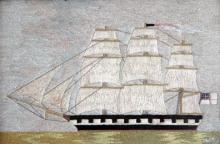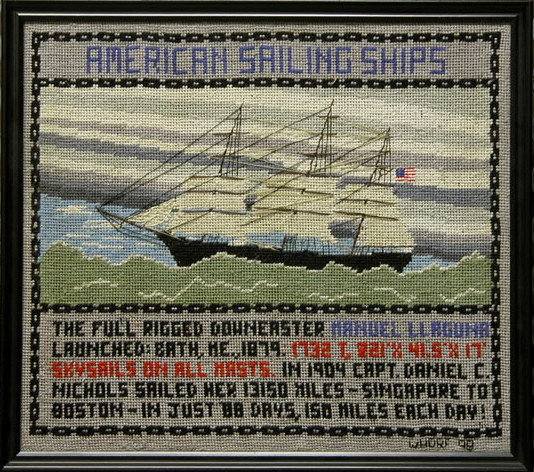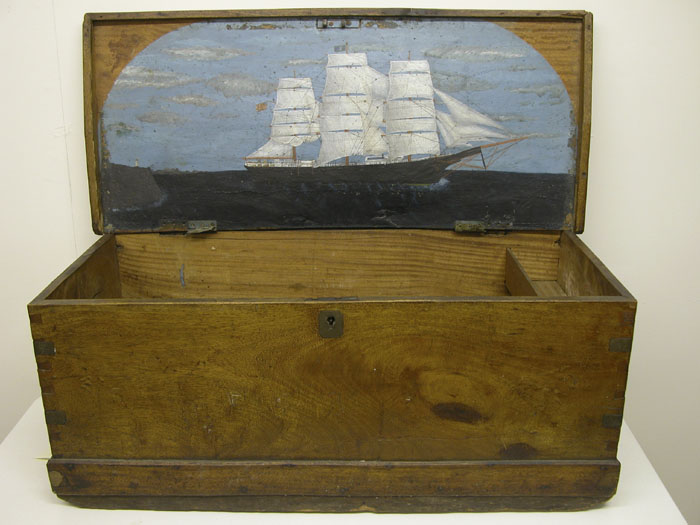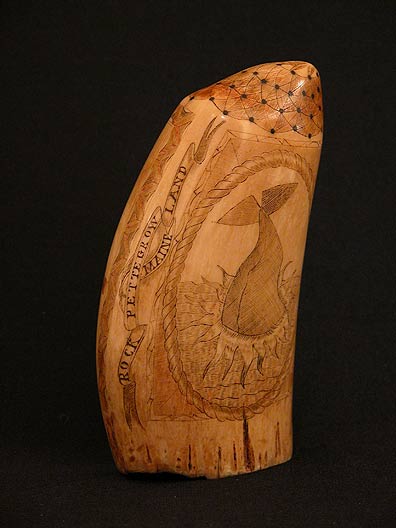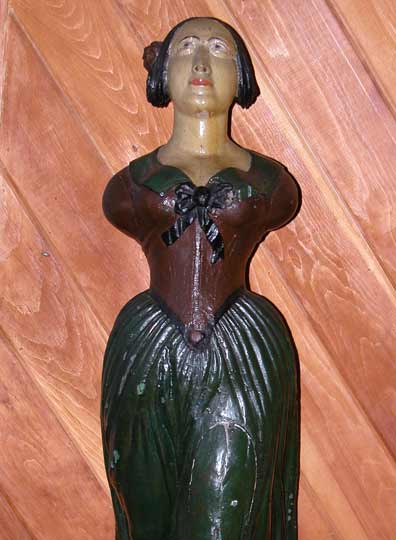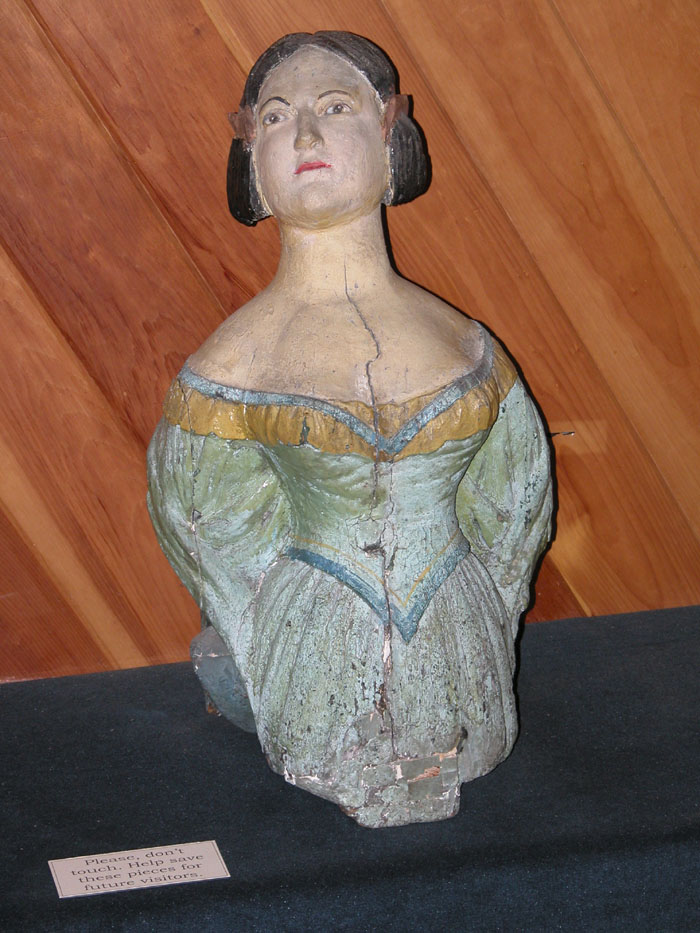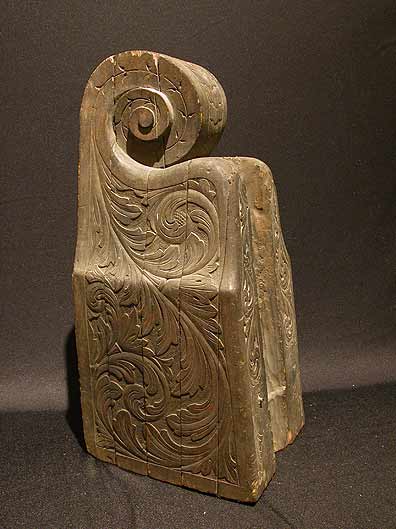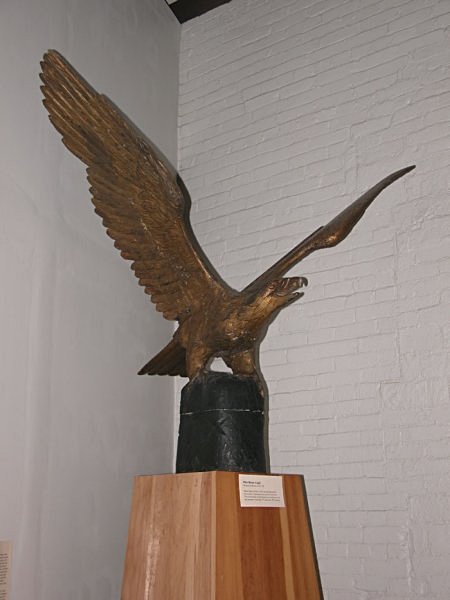Non-paint Media
Textiles and Needlework
Marine art includes more than paintings. In the 19th century, vessels were often the subject of textile art. Sailors and captains, as well as their wives and daughters, stitched pictures of ships using silk or wool. Woolen pictures were common in England, and were called wooliesWoolies
Pictures stitched in wool on fabric, often made by a sea captain.. This one shows a British Man-of-WarMan-of-War
A warship..
William Whorf, a retired seaman, took up needlepoint and stitched over one hundred pieces with maritime subjects. In addition to skillful workmanship and design, Whorf's pictures present many facts about ships and their history. This one shows the Manuel Llaguno (below).
Carvings
ScrimshawScrimshaw
Carvings done by sailors using the jawbone or teeth of a whale or shark. The etched design was filled in with India ink or tar, then polished with sailmakers' wax and canvas.
Read more traditionally refers to intricate carvings on whales' teeth. It was made by sailors on whale ships. Maine had few whaling vessels, but the museum does have a collection of scrimshaw put together by Mainers. This piece (below, right) is signed by a sailor from Rockland, Maine.
Decorative Painting
Sometimes artists painted on surfaces other than canvases; for example, George Eugene Jones painted a sea chest with an image of his ship, the Challenger, inside (above). Marine themes were often painted on furniture or other household items. For example, this image (below) of a reverse painting on glassReverse painting on glass
In the early to mid-1800s, many New England families had a clock or mirror decorated with a scene painted on the back of a glass section and showing through. The image would of course be reversed. Common images included ships, steamboats, flowers, or children playing. is at the top of a mirror. It shows a brigBrig
Vessel with two masts; both square-rigged. with the American flag.
Woodcarving
Ship figureheadsFigurehead
A carved wooden statue or figure attached to the bow under the bowsprit of a vessel. are well-known examples of marine woodcarving. In ancient times figureheads were placed on ships for protection against evil spirits. By the 19th century they were purely decorative.
BilletheadsBillethead
A carving, usually a scroll attached to the bow under the bowsprit of a vessel. When it is a representational figure it would be called a figurehead. are used like figureheads but are abstract designs rather than figures. Friendship sloopsFriendship sloop
A sub-type of the Maine sloop boat, used primarily for lobster fishing, developed in the vicinity of Friendship on the coast of Maine, with a fixed keel, clipper bow, deep draught, wide beam and a elliptical shaped stern. traditionally have trail boardsTrail board
Carved and sometimes gilded boards that lead aft (towards the rear) from the stem. Trail boards helped support figureheads in old ships. Sometimes they decorate the bows of sailing yachts. and a small eagle figure, while steamboats carried eagles on their pilot houses.

